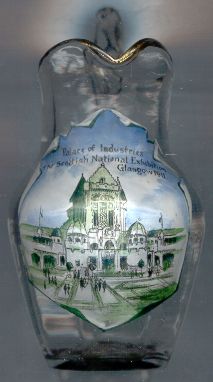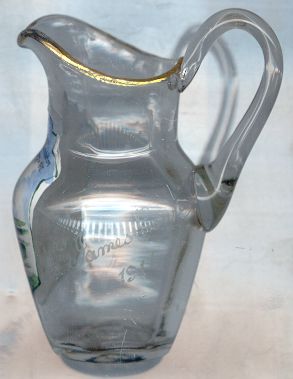

|
| UNITED KINGDOM OF GREAT BRITAIN AND NORTHERN IRELAND |
| Scotland |
| Strathclyde |
 Glasgow is situated at an elevation of 65 m on the river Clyde in southwest Scotland.
With a population of 629,500 (2001) it is Scotland's largest city. Greater Glasgow, the city of Glasgow and the
surrounding metropolitan area together, has a population of about 2.1 million. The surrounding region of Strathclyde
has a population of over 2.6 million, over half of the whole Scottish population. The city's name comes from the older
Gaelic glas cu (compare modern Gaelic Glaschú), meaning 'green hollow'.
Glasgow is situated at an elevation of 65 m on the river Clyde in southwest Scotland.
With a population of 629,500 (2001) it is Scotland's largest city. Greater Glasgow, the city of Glasgow and the
surrounding metropolitan area together, has a population of about 2.1 million. The surrounding region of Strathclyde
has a population of over 2.6 million, over half of the whole Scottish population. The city's name comes from the older
Gaelic glas cu (compare modern Gaelic Glaschú), meaning 'green hollow'.
The area of Glasgow has been inhabited for thousands of years. The Romans settled in this area too and in 142–144 AD built the Antonine Wall, remainders of which can still be seen in Glasgow. The modern settlement was founded in the 6th century by the missionary St. Mungo. Not much is known about Glasgow's history in the following centuries. When the construction of the cathedral began in the 12th century, Glasgow had grown into a city. After the foundation in 1451 of the university Glasgow not only was a religious centre, but also became an academic centre. During the 17th and 18th century Glasgow became one of the most important trading places within the British Empire. The clearing of mud from the lower Clyde river in the late 18th century enabled larger ships to get access to the town and thus provided the basis for the shipbuilding industry and the industrialisation of the 19th century. By the end of that century Glasgow was known as the "Second City of the Empire" and was producing most of the ships and trains in the world. The 20th century showed a great decline in the city's fortunes, especially with two world wars and the Great Depression. By the end of the century however there has been a significant resurgence in Glasgow's economic fortunes, as well an increase in tourism due to the legacy of the city's status as European City of Culture in 1990, and the city's thriving artistic community, the most significant outside of London.
 The
The  Scottish National Exhibition 1911 was held in Glasgow. The venue of the exhibition was
at the eastern end of Kelvingrove Park (the Kelvingrove Art Gallery and Museum were excluded). Rather than focussing the
exhibition on a main building, exhibits illustrating the various themes were housed in buildings dispersed over the
exhibition area. The aim of the 1911 exhibition was to fund a chair of Scottish History and Literature at the University of
Glasgow. In contrast to the international themes of the earlier exhibitions the emphasis was firmly on Scottish themes,
past and present.
The picture on glass no. 1652 [left] shows the
Scottish National Exhibition 1911 was held in Glasgow. The venue of the exhibition was
at the eastern end of Kelvingrove Park (the Kelvingrove Art Gallery and Museum were excluded). Rather than focussing the
exhibition on a main building, exhibits illustrating the various themes were housed in buildings dispersed over the
exhibition area. The aim of the 1911 exhibition was to fund a chair of Scottish History and Literature at the University of
Glasgow. In contrast to the international themes of the earlier exhibitions the emphasis was firmly on Scottish themes,
past and present.
The picture on glass no. 1652 [left] shows the  Palace
Palace
The engraving on the side of the glass [right] reads "Mrs James Gourlay 1911."
![[scale]](lineal.jpg)